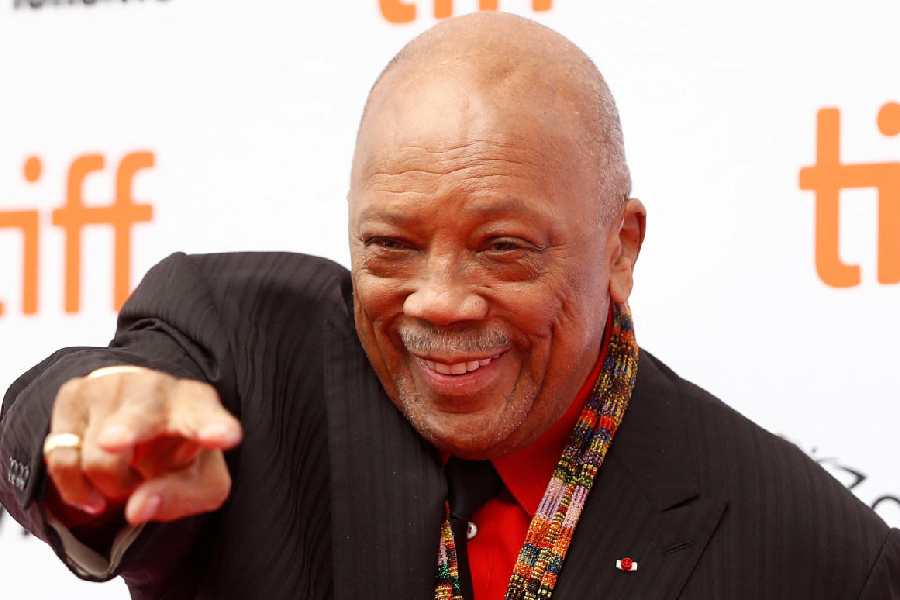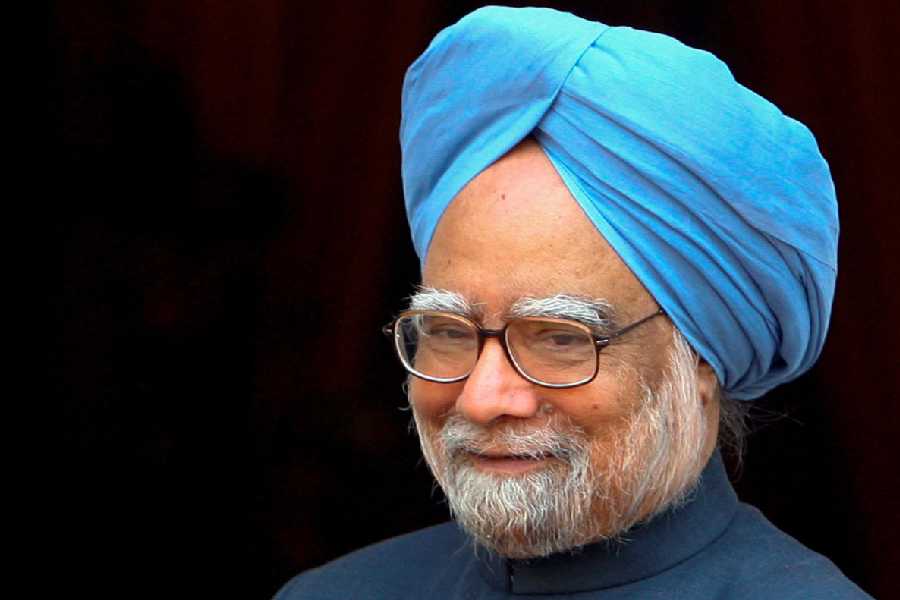Quincy Jones, one of the most powerful forces in American popular music for more than half a century, died on Sunday in California. He was 91.
His death was confirmed in a statement by his publicist, Arnold Robinson, that did not mention a cause. The statement said that he had died peacefully at his home in Bel Air.
Jones began his career as a jazz trumpeter and was later in great demand as an arranger, writing for the big bands of Count Basie and others; as a composer of film music; and as a record producer. But he may have made his most lasting mark by doing what some believe to be equally important in the ground-level history of an art form: the work of connecting.
Beyond his hands-on work with score paper, he organized, charmed, persuaded, hired and validated. Starting in the late 1950s, he took social and professional mobility to a new level in Black popular art, eventually creating the conditions for a great deal of music to flow between styles, outlets and markets. And all of that could be said of him even if he had not produced Michael Jackson’s “Thriller,” the best-selling album of all time.
Jones’ music has been sampled and reused hundreds of times, through all stages of hip-hop and for the theme to the “Austin Powers” films (his “Soul Bossa Nova,” from 1962). He has the third-highest total of Grammy Awards won by a single person — he was nominated 80 times and won 28. (Beyoncé’s 32 wins is the highest total; Georg Solti is second with 31.) He was given honorary degrees by Harvard, Princeton, Juilliard, the New England Conservatory, the Berklee School of Music and many other institutions, as well as a National Medal of Arts and a National Endowment for the Arts Jazz Master fellowship.
His success — as his colleague in arranging, Benny Carter, is said to have remarked — may have overshadowed his talent.
In the late 1950s and early ’60s, Jones led his own bands and was the arranger of plush, confident recordings like Dinah Washington’s “The Swingin’ Miss ‘D’” (1957), Betty Carter’s “Meet Betty Carter and Ray Bryant” (1955) and Ray Charles’ “Genius + Soul = Jazz” (1961). He arranged and conducted several collaborations between Frank Sinatra and Count Basie, including what is widely regarded as one of Sinatra’s greatest records, “Sinatra at the Sands” (1966).
He composed the soundtracks to “The Pawnbroker” (1964), “In Cold Blood” (1967) and “The Color Purple” (1985), among many other movies; his film and television work expertly mixed 20th-century classical, jazz, funk and Afro-Cuban, street, studio and conservatory. And the three albums he produced for Michael Jackson between 1979 and 1987 — “Off the Wall,” “Thriller” and “Bad” — arguably remade the pop business with their success, by appealing profoundly to both Black and white audiences at a time when mainstream radio playlists were becoming increasingly segregated.
Quincy Delight Jones Jr. was born on the South Side of Chicago on March 14, 1933, to Quincy Sr. — a carpenter who worked for local gangsters — and Sarah (Wells) Jones, a musically talented Boston University graduate. At one point in the late 1930s, Quincy and his brother, Lloyd, were separated from their mother, who had developed a schizophrenic disorder, and taken by their father to Louisville, Kentucky, where they were put in the care of their maternal grandmother, a former enslaved worker.
By 1943, Quincy Sr. had moved with his sons to Bremerton, Washington, where he found work in the Puget Sound Naval Shipyard. They were eventually joined by his second wife, Elvera, and her three children, and four years later the family moved to Seattle. Once there, Quincy Sr. and Elvera had three more children; of the eight, Quincy Jr. and Lloyd perceived themselves to be the least favored by their stepmother, and were often left to fend for themselves.
Drawn to Music
But the young Quincy was hungry to learn, and eventually to leave. At 11, he and his brother broke into a recreation center looking for food; there was a spinet piano in a supervisor’s room in the back, and as he later told the story in the BBC documentary “The Many Lives of Q” (2008), “God’s whispers” made him move toward it and touch it. He joined his school band and choir, learning several brass, reed and percussion instruments, and music became his focus.
At 13, he persuaded the trumpeter Clark Terry, who was in Seattle for a month while touring with Count Basie’s band, to give him lessons after the band’s late set and before his school day began.
At 14, he met the 16-year-old Ray Charles, then known as R.C. Robinson, who had come west from Florida; they became close, and both worked for Bumps Blackwell, a local bandleader. At 15, he gave Lionel Hampton an original composition and was hired for his touring band on the spot, only to be dismissed the next day by Hampton’s wife and manager, Gladys, who admonished him to go back to school.
After graduating from Garfield High School in Seattle, he attended Seattle University for one semester, then accepted a scholarship to attend the Schillinger House in Boston, now known as Berklee College of Music.
In 1951, Hampton’s band came calling again. This time, Jones joined and stayed for two years, as a trumpeter and occasional arranger. He wrote music quickly — including his first complete and credited composition, “Kingfish”— and got it sounding good quickly, through preternatural skills of charm and organization.
During that time he settled down with his high school girlfriend, Jeri Caldwell, and had a daughter, Jolie, in 1952, although they did not marry until 1957. (She was white, and the early days of their relationship and child-rearing met much disapproval. It was the first of Jones’ three marriages, all interracial.) By the end of 1953, still only 20 and with a young daughter, he left Hampton’s band to settle in New York and work as a freelance arranger for Count Basie and the saxophonist James Moody, among others.
His true education was only beginning. In 1956, Jones was hired as musical director, arranger and trumpeter in the trumpeter Dizzy Gillespie’s band, which traveled under the auspices of the State Department for three months through Europe and the Middle East and then took a second trip to South America.
He recorded the first album under his own name, “This Is How I Feel About Jazz,” in 1956. A year later he moved to Paris to work for Barclay Records, and stayed in Europe on and off for five years as the label’s staff arranger and conductor. He took advantage of the opportunity to write for strings — because, in his view, a Black arranger was much less likely to be given the chance to do so in America — and studied music theory with Nadia Boulanger.
In 1958, Jones signed with Mercury Records. For “The Birth of a Band!” and “The Great Wide World of Quincy Jones,” both released in 1959, he assembled a big band including Terry and other first-tier jazz musicians. Jones’ vision for this band grew out of the tight and smooth sound world of the 1950s Count Basie Orchestra.
Offered the job of assembling a jazz band to lead the orchestra in a musical — “Free and Easy,” about the post-abolition South, based on the work of the Black American writers Arna Bontemps and Countee Cullen and with a score by Harold Arlen and Johnny Mercer — Jones used many of the players from his working ensemble. The idea, as he explained in “Q,” his 2001 memoir, was for the group to “work the kinks out of the show” in Europe before it moved on to London and, potentially, Broadway.
Hobbled by a problematic script and an 11th-hour change in director, “Free and Easy” opened at the Alhambra Theater in Paris in January 1960 and closed within a few weeks.
A Pivot to Pop
Wanting to keep his band together at all costs, Jones kept 30 people on the payroll and assembled concerts around Europe for 10 months; deep in debt at the end of the tour, he sold publishing rights for half of his songs to get his retinue home. (He would later buy back those rights at a much higher price.)
Back in New York, the band dissolved, and so did Jones’ first marriage — although, given his chronic infidelity, that might have been some time coming. “It got so out of control,” he wrote in his memoir, “that at one point I was in love with and dating Marpessa Dawn, the leading lovely from ‘Black Orpheus’; a Chinese beauty; a French actress; Hazel Scott, the gifted, cosmopolitan ex-wife of Adam Clayton Powell Jr.; and Juliette Gréco, the Queen of French Existentialism, all at the same time.”
Jones took the job of musical director at Mercury in 1961, assembling its jazz roster: He signed Dizzy Gillespie, Gerry Mulligan, Shirley Horn and others. But this was a moment when pop was taking over; jazz’s margins, and perhaps its audience, too, were in steep decline.
He changed his focus accordingly. His first pop success was with singer Lesley Gore, only 16 when Jones came into possession of her demo tape. “She had a mellow, distinctive voice and sang in tune, which a lot of grown-up rock ’n’ roll singers couldn’t do, so I signed her,” he wrote. He helped make the song “It’s My Party” (1963) into a No. 1 hit for Gore, rushing acetates to radio stations just before another version of the song, sung by the Crystals and produced by Phil Spector, which remains unreleased.
In 1964, Jones ascended at Mercury, becoming the first Black vice president of a white-owned record label. (He also won his first Grammy Award that year, for his arrangement of Count Basie’s “I Can’t Stop Loving You.”) He kept the position for less than a year, until he scored “The Pawnbroker” — one of his greatest achievements as a composer — and moved to Los Angeles to work in films and television.
His most frenetic years, professionally and personally, began in the late 1960s and stretched until 1974. He married Ulla Andersson, a 19-year-old Swedish model, in 1967 and had two children with her, Martina and Quincy III; they divorced in 1974. His dozens of film-score credits in those years included “The Deadly Affair,” “In the Heat of the Night,” “In Cold Blood,” “Mirage,” “For Love of Ivy” and “The Getaway,” and he composed theme songs and scored episodes for “Sanford and Son,” “Ironside” and two different shows starring Bill Cosby. He also produced the 1973 television tribute “Duke Ellington … We Love You Madly.”
At the same time Jones was making large-ensemble jazz-funk records as a leader, including “Walking in Space” (1969), whose title track won a Grammy for best instrumental jazz performance by a large group, before moving toward a more purely commercial kind of funk and R&B with “Body Heat” (1974).
He was working on “Mellow Madness,” a follow-up to “Body Heat,” when he suffered a brain aneurysm in 1974, resulting in two operations. After the first, his friends, not expecting him to live, organized a memorial concert at the Shrine Auditorium in Los Angeles. The concert went on as planned, with a roster including Cannonball Adderley, Sarah Vaughan, Ray Charles and others. Jones attended, under strict orders from his neurosurgeon not to get excited. “It felt like I was watching my own funeral,” he later wrote.
(END OPTIONAL TRIM.)
For a few years Jones slowed down, comparatively. He married actress Peggy Lipton and had two daughters with her: Kidada Jones, an actress, model and fashion designer, and film and television actress Rashida Jones.
He produced hit records by the Brothers Johnson, who had sung on “Mellow Madness”; contributed music to the celebrated miniseries “Roots” in 1977; and in 1978 served as musical supervisor for Sidney Lumet’s film version of the Broadway musical “The Wiz,” working with Michael Jackson for the first time. The two would go on to make “Off the Wall,” “Thriller” and “Bad,” whose combined certified American unit-sales amount to 46 million, and whose worldwide figures are said to be more than double that.
As a joint venture with Warner Bros. Records, Jones started his own label, Qwest, in 1980. The label’s first release was the singer and guitarist George Benson’s “Give Me the Night,” which won three Grammys; otherwise, its quirky discography — the list includes not just stars like Frank Sinatra, Lena Horne and the R&B singer James Ingram, but also the post-punk band Joy Division, the gospel singer Andraé Crouch and the experimental jazz saxophonist Sonny Simmons — proved, if it needed proving, that Jones was not concerned only with the bottom line.
In 1985, he produced, arranged and conducted a supergroup of more than 40 singers — including Diana Ross, Michael Jackson and Stevie Wonder — under the banner name USA for Africa, in “We Are the World,” a fundraising single for famine relief. (The making of that record was the subject of a 2024 Netflix documentary, “The Greatest Night in Pop.”)
Shortly after that, he served as associate producer of Steven Spielberg’s film adaptation of Alice Walker’s novel “The Color Purple.” He also wrote the score, in less than two months.
To Tahiti and Back
Meanwhile, Jones’ third marriage failed, he became dependent on the sleeping pill Halcion, and he was not making good on plans for a follow-up to “Bad.” In 1986, he fled to one of Marlon Brando’s vacation spots — “a cluster of islands he’d owned in Tahiti since filming ‘Mutiny on the Bounty,’” as he described it in his memoir, “Q.” He spent a month recovering, overcame his Halcion addiction and bounced back.
The 1989 album “Back on the Block” served as his official return, with a guest roster that typified his cross-generational, cross-stylistic dream of Black American music: Ella Fitzgerald, Miles Davis, Ice-T, Luther Vandross, Barry White. The album won six Grammys, including album of the year, and Jones was named nonclassical producer of the year.
The documentary feature “Listen Up: The Lives of Quincy Jones,” which told his story through the recollections of his colleagues, was released in 1990. That same year, his record label became part of a larger multimedia entity, Quincy Jones Entertainment, which produced the sitcoms “The Fresh Prince of Bel Air” and “In the House” as well as the sketch show “Mad TV.” The business eventually branched out into publishing: He helped start the hip-hop magazine Vibe, and published Spin and Blaze with Robert Miller.
In 1991, he produced a concert at the Montreux Jazz Festival in Switzerland — of which he, in typical factotum spirit, had become a co-producer — reuniting Miles Davis with the arranger Gil Evans to play music from the albums “Sketches of Spain” and “Porgy and Bess.” It was there that he met the actress Nastassja Kinski, with whom he lived for four years, a union that produced his seventh child, Kenya Julia Miambi Sarah Jones, who became a model and is known professionally as Kenya Kinski-Jones.
(BEGIN OPTIONAL TRIM.)
By that time Jones’ life and work had become entwined with hip-hop, with or without his direct input. At the time of his death in 1996, Tupac Shakur had sampled, for his own No. 1 hit “How Do U Want It,” a piece of Jones’ “Body Heat” — a track that has also been sampled by Das EFX, Mobb Deep and Tyrese, among others — and was dating Jones’ daughter Kidada.
(END OPTIONAL TRIM.)
According to his publicist, Jones is survived by a brother, Richard Jones; by two sisters, Margie Jay and Theresa Frank; and by seven children: Jolie, Kidada, Kenya, Martina, Rachel, Rashida and Quincy III.
In his final decades, Jones dedicated much of his time to charity work through his Listen Up! Foundation; established a Quincy Jones professorship of African American music at Harvard University; produced “Keep On Keepin’ On,” a 2014 film about the teacher-student relationship between the 89-year-old Clark Terry, Jones’ old mentor, and Justin Kauflin, a young blind jazz pianist; and released the album “Soul Bossa Nostra,” reprising songs he’d produced in the past, with appearances by Snoop Dogg, T-Pain and Amy Winehouse, who contributed a louche version of “It’s My Party” — her last commercial release before her death in 2011.
Jones stayed in the public eye. In 2018, he made headlines when he gave wide-ranging interviews to New York and GQ magazines that contained surprising comments about Michael Jackson and other subjects.
In 2017, he helped launch a video platform, Qwest TV, offering high-definition streams of jazz concerts and documentaries, and in 2022 he appeared on the album “Dawn FM” by the Weeknd, performing a monologue on the track “A Tale by Quincy.”
But even his not-fully-realized back-burner projects tell a story of their own, a kind of secondary biography of the obsessions and connections of a constantly busy man. Among them were a musical about Sammy Davis Jr.; a Cirque du Soleil show on the history of Black American music, from its African roots; a film about Brazilian carnivals; a film version of Ralph Ellison’s unfinished novel “Juneteenth”; and a film on the life of Alexander Pushkin, the Russian poet who was said to be of African origin.











